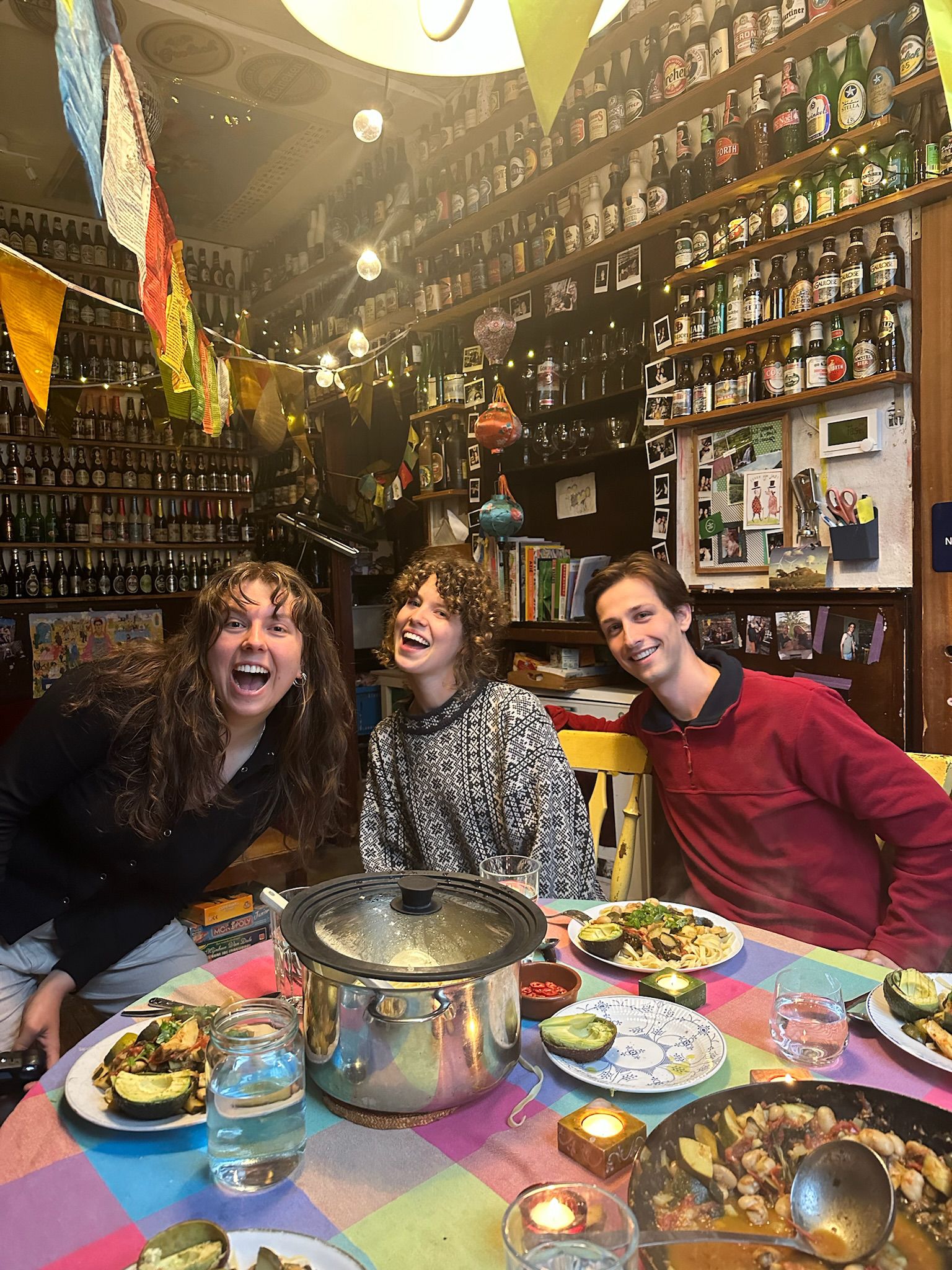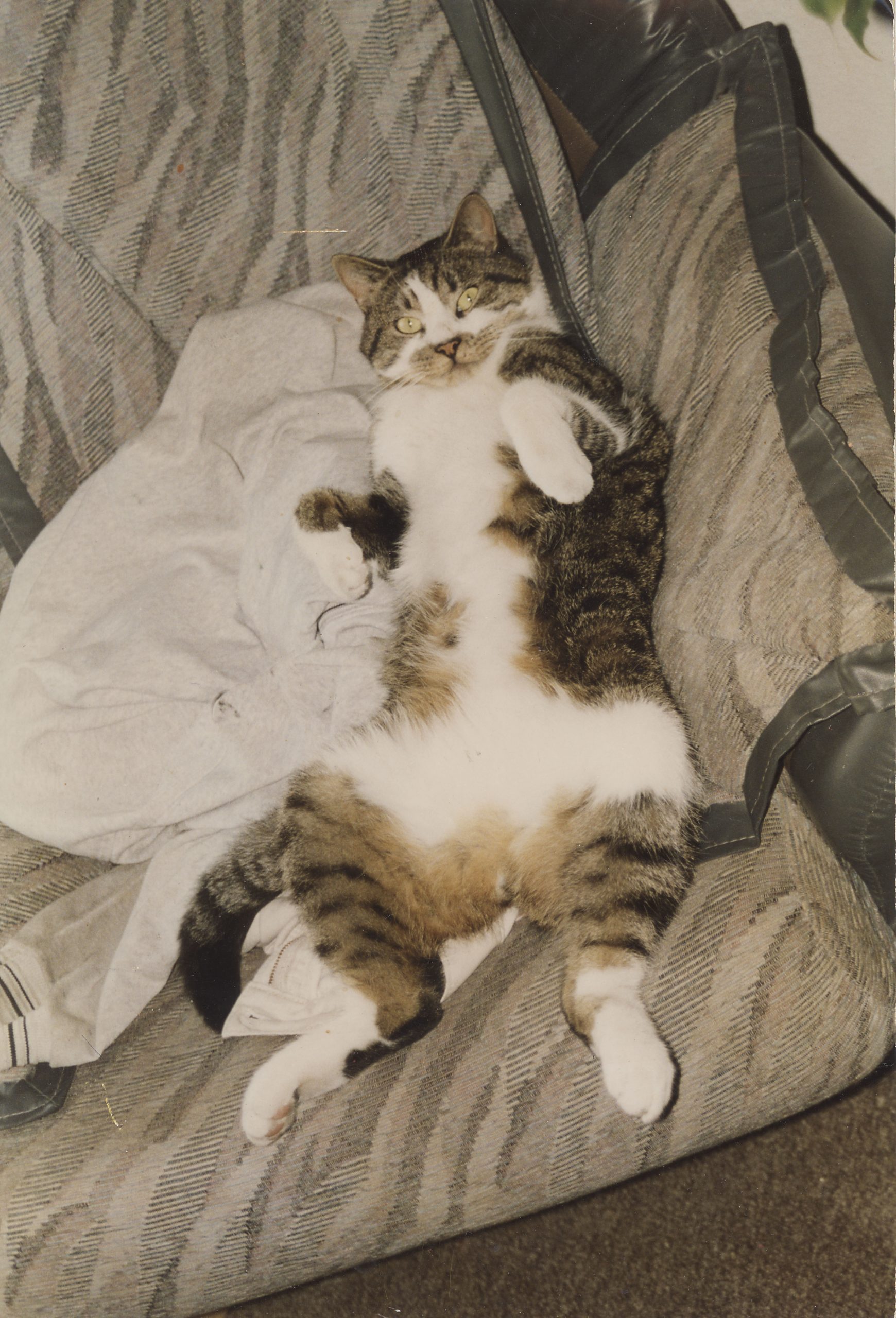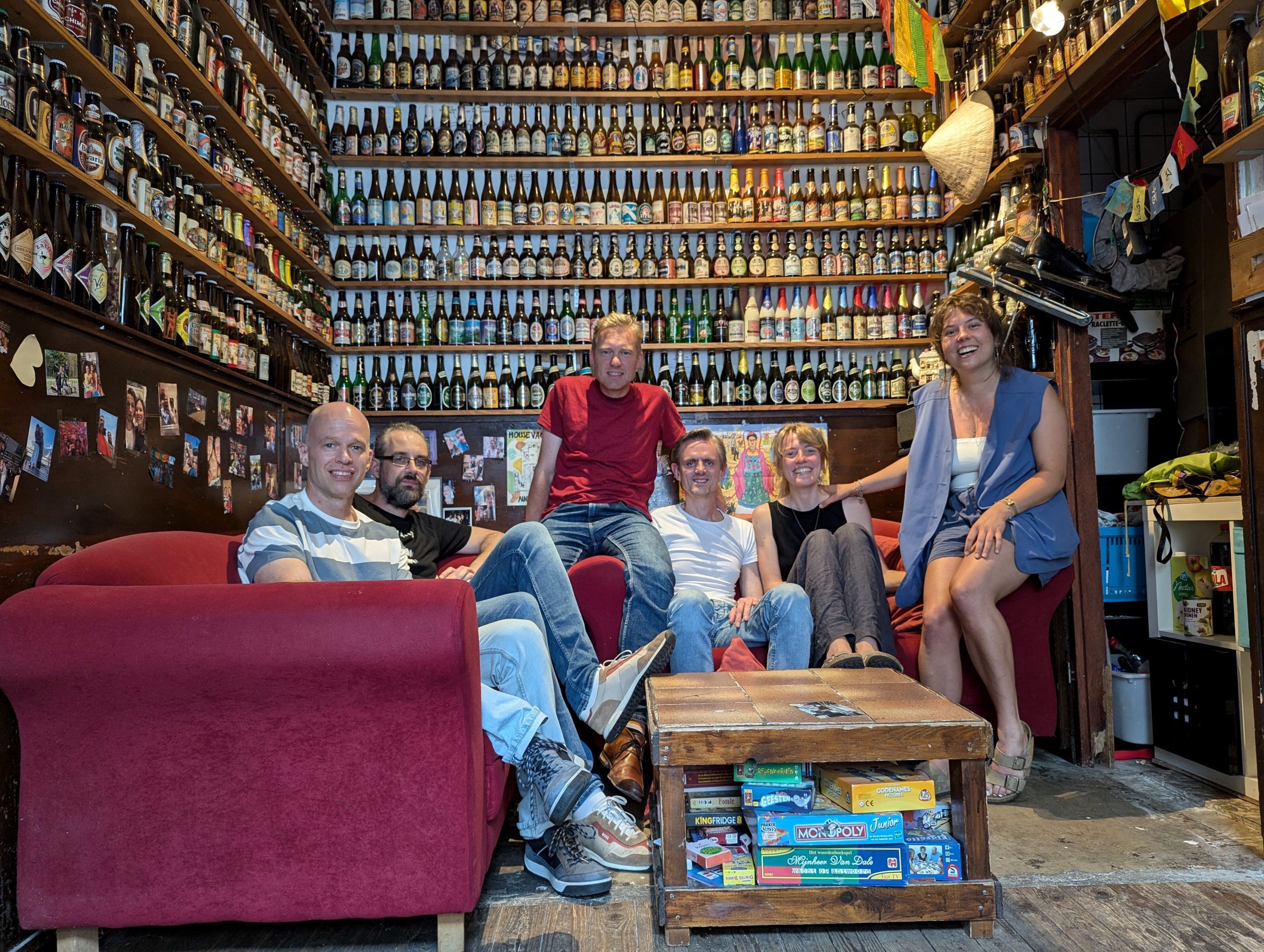Despite the shortage of student rooms, this summer Delft has five student rooms less: the Lorna te George student house is no longer open. And this may make a beer bottle collection of almost 1,700 bottles homeless. Delta spoke to the first and last resident of the student house.
From left to right: first-generation residents Orio, David, Gerwin, Mark and last-generation residents Lisa and Eefje. (Photo: Orio Kieboom)
No visitor to the student house on the Nieuwe Schoolstraat can miss the collection: 1,671 empty beer bottles that fill the walls of the communal space and adjacent corridors. “You can even see the bottles from the street. People sometimes stand and stare through the window,” says Eefje Eikelenboom who lives there. Or to be more precise, used to live there. Lorna te George has been closed and the owner has sold the house.
Only the living room and the corridors – whose walls are still filled with the brown, green and transparent glass empty bottles – still have the feel of a student house. The five rooms are now bare, empty and lifeless. Eefje slept there for the last time in June, on a mattress in a completely empty room. The next day she closed the cream coloured front door for the very last time. “I felt quite sentimental, given all the memories that I had there. The years I spent there were the most important in my student time.”
‘In a student house, you experience everything about each other’

Lorna te George was a ‘great house’ says Eefje. It felt close and had a family feeling, but at the same time felt free and relaxed. She lived in the attic with another housemate in the room opposite hers. It was first one Liza and then a second Lisa. “We were ‘the two girls in the attic’. Our doors were always open and we were always talking to each other.” She will be friends for life with both of them.
A special bond
She had breakfast with her other housemates if they happened to get up at the same time. They sat chatting for hours, lounged in the garden, or drank cups of tea together. The other people in the house were also close. “You experience everything about each other in a student house. The good things and the bad things. Building up a bond this way is very special.”
She says that the landlord did the sale in a good way. Eefje and her housemates quickly realised that they had to find a new home for the beer bottle collection. It would be a shame to throw things away that her predecessors had worked so hard on. So she and Lisa number two went in search for a buyer. They contacted a beer museum, stuck a for sale note on their window, looked at beer forums and put the collection for sale on Marktplaats, the online market place. Till now without effect. “You would think that a collector would be interested. Or a bar or restaurant. These bottles give you an instant brown café (in Dutch a bruin cafe is a traditional cafe with traditional decor, Eds.) look.”
‘It’s bizarre that nobody removed them’
But their search was not entirely in vain. Orio Kieboom, the first generation of students who lived there, saw the note on the window and contacted Eefje. He asked if he and three of his then housemates could drop by before the house was closed. They did so and Orio thought it was “unbelievable that the beer bottle collection was still intact and had survived almost 30 years in a student house. That they are not damaged and that nobody has taken them away. Very strange.”

He also recognised other things too, such as the colour of the walls that he and his housemates painted. Some of the tables were still there, as were a few beer coasters and even the Wi-fi password. “The password was ‘Sjorsdekat’, named after our house cat who has since died. Eefje only found out where that password came from during our visit.”
Excel sheet
Orio and his housemates had started the beer bottle collection. “There was wood panelling around the whole living room and we put some empty bottles on it for fun. This gave rise to the idea to continue doing this, but it went much further than we ever thought it would.”
They took the collection seriously. They kept track of the bottles to avoid having two or more of the same bottles. There are now 1,671 bottles that still have the name, brewery, country of origin and alcohol percentage on the labels. What is the most unusual name? ‘A Bier voor Vader na het autowassen’ (a beer for father after washing the car). The collection includes beer from Argentina, Mongolia, Tahiti and Zimbabwe. And almost 500 different beers from the Netherlands. The strongest beer has 15% alcohol. There are hardly any 0.0 beers as the avid collectors stopped collecting in around 2010, long before alcohol free beers became popular. Salient detail: the bottles still have their original crown caps. “We opened them tooth by tooth so that we could put them back on the bottle.”
Fanatical cleaner
The beer bottle collection has not been added to over the last 10 years. They were kept clean though, at first very rigorously and then ‘more or less’ so. “When I first came to live here, one of my housemates was very fanatical about cleaning. He came up with a system involving a piece of string and some cotton wool to keep track of which row of bottles had been cleaned last. As part of your household chores, you had to first dust one row of bottles and then move the cotton. This was done less rigorously later on and we agreed that we would just dust a row if we saw that it was dirty.”
At first Eefje felt guilty that she has not been able to find a new owner for the bottle collection. The visit of the former housemates eased that guilt. “They said that it was not the end of the world if the bottles should end up in the glass container.” Orio says that “It would be a shame if the collection disappears, but it is not that much of a shame that I feel I have to save them myself. I can’t house them all myself.”
Check the photo slider below to see the beer bottles







- Are you interested in the 1,671 empty beer bottles? Email e.c.eikelenboom@outlook.com Please note: they will only be available until 31 August.
Do you have a question or comment about this article?
a.m.debruijn@tudelft.nl


Comments are closed.